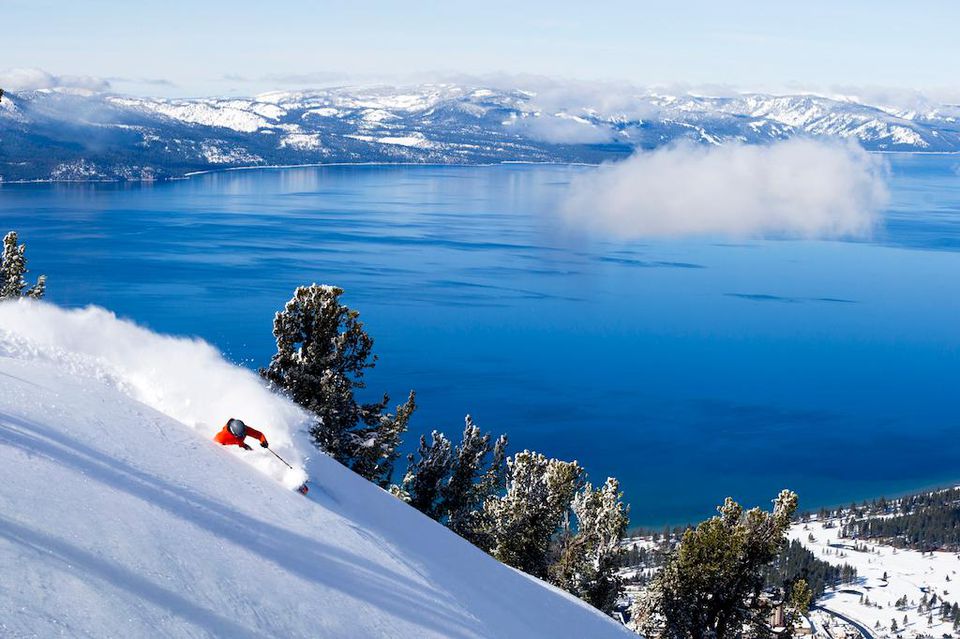INCLINE VILLAGE, Nev. — Scientists, policy leaders and conservation experts from five continents have advanced several major initiatives to protect migratory freshwater fish and their habitats following a high-level workshop held July 15-17 at the University of Nevada, Reno at Lake Tahoe.
The Migratory Fish and Global Swimways Workshop, hosted by the University’s Tahoe Institute for Global Sustainability with support from PlusFish Philanthropy, produced a series of concrete outcomes that will directly inform global conservation work leading up to the 2026 United Nations Convention on Migratory Species COP15 summit in Brazil. These outcomes include:
- Identification of freshwater fish species for potential Convention on Migratory Species listing
- Designation of globally significant migration corridors, including the Truckee River from Lake Tahoe to Pyramid Lake
- A commitment to contribute a chapter on freshwater fish to the UN Atlas of Animal Migration, a global initiative mapping the world’s most important migratory routes
- Plans for a Convention on Migratory Species report, peer-reviewed scientific publication, global species database, and outreach materials
“These are not symbolic conversations—we’re generating the data, strategies, and commitments that will shape global policy,” said Zeb Hogan, aquatic ecologist in the University’s College of Science and workshop organizer. “The outcomes of this meeting will directly inform global efforts to protect migratory fish populations and restore connectivity in rivers around the world.”
Hogan published an article on Friday, July 18, in Environmental Science & Policy highlighting the importance of incorporating inland fisheries into multilateral environmental agreements, and underscoring the role of conventions such as the Convention of Migratory Species in enhancing the management and conservation of aquatic biodiversity and ecosystems.
The workshop brought together experts from the UN Convention on Migratory Species Secretariat, World Wildlife Fund, the Global Center for Species Survival, Shedd Aquarium, Cornell University, University of Tennessee, the Leibniz-Institute of Freshwater Ecology and Inland Fisheries and the Chinese Academy of Sciences, alongside faculty and students from the University of Nevada, Reno.
Importantly, the workshop also spotlighted the Truckee River system and its connection toto Pyramid Lake, as an essential migratory route for Lahontan cutthroat trout and cui-ui. Decades-long restoration efforts by the Pyramid Lake Paiute Tribe showcased the tribe’s leadership in Indigenous-led conservation. University of Nevada, Reno graduate student Zach Bess and is co-authoring the Convention on Migratory Species submission, reinforcing the University’s role in student-engaged global research.
In addition to technical sessions, participants toured the Monster Fish: In Search of the Last River Giants exhibit at the University of Nevada, Reno at Lake Tahoe campus and explored nearby freshwater habitats, observing native species such as the Tahoe sucker and experiencing firsthand the region’s conservation legacy.
“The University of Nevada, Reno at Lake Tahoe is acting as a global hub for science-informed policy and conservation action,” said Melanie Virtue, Head of the Aquatic Species Team at the United Nations Convention on Migratory Species Secretariat. “This gathering showcased the University’s growing leadership in freshwater biodiversity and environmental sustainability.”
The workshop emphasized the importance of operating at the science–policy interface and demonstrated how universities like the University of Nevada, Reno can convene international experts, elevate Indigenous and local knowledge, and engage students in solving the world’s most pressing environmental challenges. As the Tahoe Institute for Global Sustainability continues to grow, the Lake Tahoe campus is well-positioned to become a leading center for transformative research and action on biodiversity, climate, and water.

